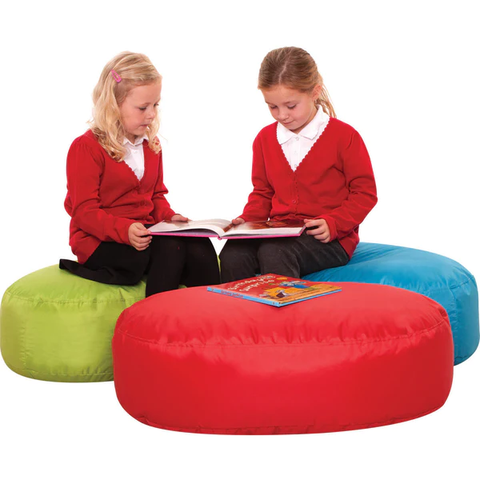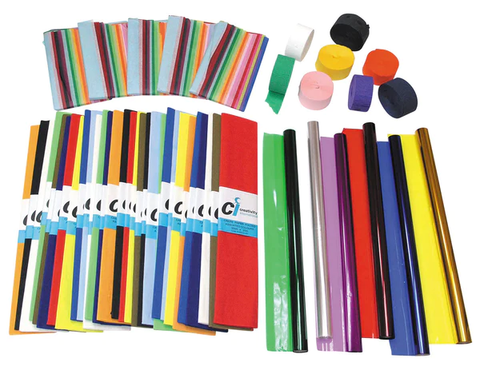A reading corner is an essential part of any classroom. This space, dedicated to peaceful, imaginative reading, allows little ones to wind down, learn and discover, and experience the joys of reading. A good reading corner encourages children to sit down and pick up a book and helps them associate reading with positive feelings.
As teachers, we want our students to feel comfortable and secure in the classroom but also excited about learning. There are so many ways to do this with your reading corner; all it takes is a little mindful planning. This article will look at what you should consider when making a successful reading corner.
1. Accessibility and Comfort
By accessibility, we mean how easy it is for your students to get into and use the reading corner. You will need to consider how well the space acts for individual quiet reading time as well as group activities like circle time and story time.
Using the right furniture greatly impacts how the space is used. It’s important to use comfortable seating that promotes good posture, so your students can read or focus for long periods without getting uncomfortable. Don’t forget about storage either. Find ways to store books that make them easy for the children to see and pick off the shelf. Using front-facing bookshelves is an excellent way to do this.
Seating
We recommend looking for seating that is padded and soft, at the right height for kids to hop on and off. Another great addition to any reading corner seating is cushions and bean bags. These are handy if you need to change the layout of the space quickly. They also give little ones many options for where they want to sit or even allow them to create a nest to read in.

Flooring
The floor of your reading corner should be soft and padded so that the children can sit or lie down easily. Choose a reading corner rug that complements the design of your reading corner, like an immersive underwater graphic carpet or a reading corner mat with placements designed on top to help you organise your students to sit in a group quickly.

Lighting
Your reading corner needs to be well-lit to help children read more clearly and focus more easily. But it shouldn’t be too bright. Be wary of direct sunlight in the reading corner that could make it too hot or get into someone's eyes when they’re reading.
Lighting can also be used creatively to add to the magic of your reading corner and make it feel even cosier. We recommend the Sensory Colour Changing Sphere, which lights up in different colours and produces a soft glow. The Glitter Fibre Optic Lamp is a good idea for twinkly fairy lights. We also sell pretend tea lights, perfect for setting a historical scene without the hazard of a naked flame.

Find many other tips, tricks, and advice about furnishing your reading corner in our blog.
- DIY Reading Corner Ideas
- Reading Corner Display Ideas for EYFS, KS1, and KS2
- Springboard Supplies’ Guide to Reading Corner Furniture
- Reading Corner Canopy Ideas
- 10 Reading Corner Rugs Teachers Love
- 7 Reading Corner Classroom Library Decorating Ideas
- Tips for Making a Cozy Reading Corner
- Reading Corner Phonics Books from the Teaching Supplies Experts
2. Creativity and Theme
While the primary function and usability of the reading corner is the first place you should start, no one will want to spend time in the reading corner if it doesn’t look enticing enough! Decoration is just as important. With a little creativity, you can immerse your students in a whole new world.
Books should be the main focus of your reading corner, so it’s a good idea to create a theme around the idea of reading and learning. The nature theme is very popular with leaves, trees, and branches built on the walls of the reading corner and ceiling. Wall displays go nicely with nature-inspired furnishings like these ladybird floor cushions.
Other reading corner themes could be:
- Outer space
- Under the sea
- A different time in history
- A fantasy land
Try playing with the height of your reading corner to make it feel like an entirely different space within the classroom. Lowering the height will help to make the area feel more cosy and secretive. We cover a few ideas in our article on reading corner canopies. Even dangling some streamers from the ceiling would add a new dynamic to the space. You could use them as draping branches in a forest or pieces of floating seaweed in an underwater theme.

Consult our blog for a wide variety of resources on creating reading corner displays that don’t cost the world.
- Ideas for Your Classroom Reading Corner Display
- 25 Reading Corner Display Quotes
- Resources for Classroom Reading Corner Quotes
- Reading Corner Display Printables: What You Need and Where to Find Them
- Make a Winning Reading Corner Display Banner
- The Best Places to Find Printable Reading Corner Display Posters
- Our Top 7 Reading Corner Display Lettering Sets
- Make or Download a Printable Reading Corner Display Banner
- Reading Corner Display Ideas: KS2 Decorating Activities
3. Engagement and Ownership
Including your class in the creation of the reading corner will give them a sense of ownership that’ll make them appreciate the space more and be happier to look after it. There are several ways you can do this. Here are some ideas.
- Let the children give you input into the planning of the reading corner. Discuss what the new reading corner should look like during circle time or at the end of the day. Take suggestions and incorporate them into the design. Or you could hold a competition for the theme of the reading corner. Task the children with drawing a blueprint for how it should look; the winning design is the one you’ll use.
- Decorate the new space with the help of your students. Allow them to contribute to the wall decor, the reading corner banner, or how the books are arranged and organised.
- Include an ongoing activity in your reading corner that requires input from the students. This could take the form of a voting poll. The voting box is kept in the reading corner along with an information board, asking the children to vote on certain topics. Tally up the results and put a display in the reading corner to show the winners.
Learn about what makes a reading corner a space kids absolutely love. We cover it all in our blog.





